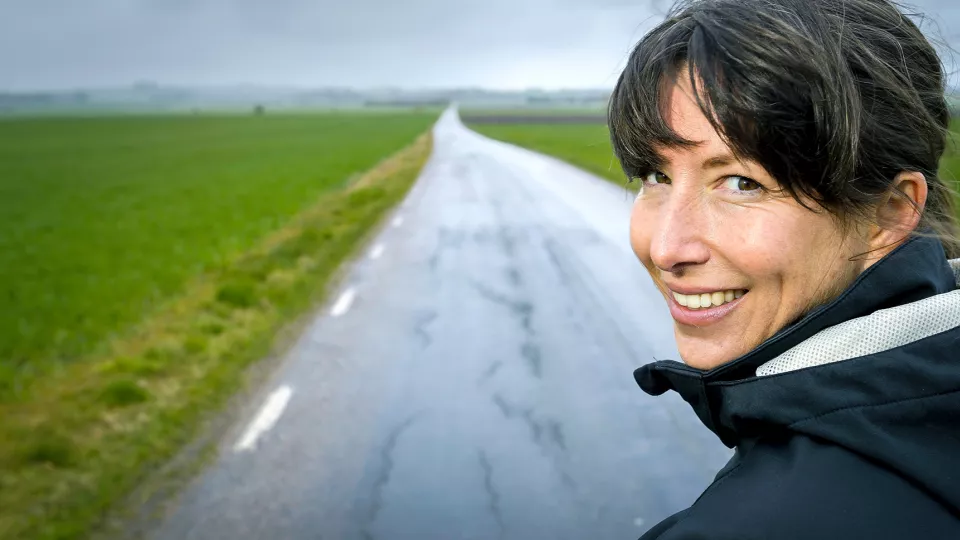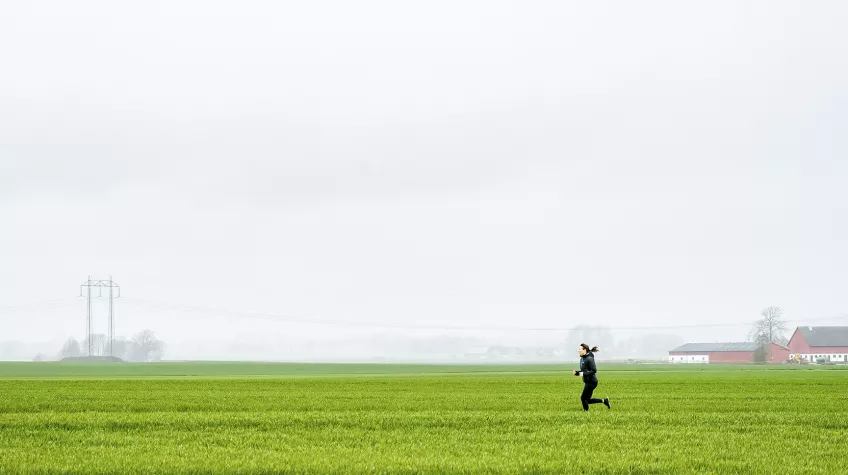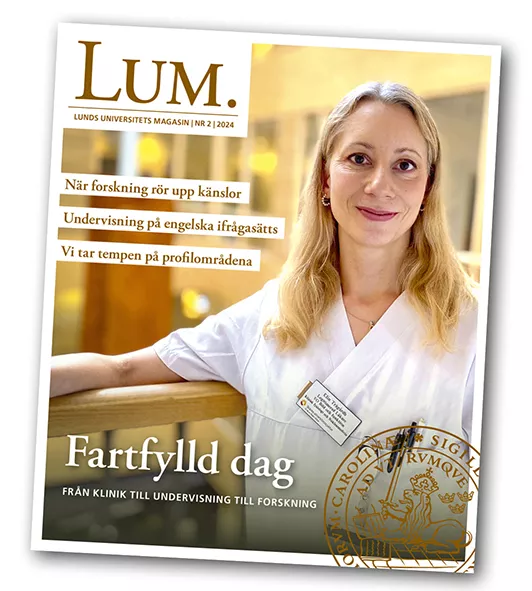You probably know what it's like.
Despite the burnt pots and sauce all over the stove: a photo of a beautifully presented meal with wine and family. #blessed
The new cat keeps you awake all night. But look how cute he is. #catsofinstagram
You're red in the face and sweating all over. Look at how beautiful nature is! And look how far I ran! #running4life
You hit your thumb with a hammer yesterday and you really want to do something else this weekend. There will be a new bathroom and sauna here. #homesweethome
What is it that makes many people feel the need to post a perfect impression on social media? How relaxing is it, really? Could it be that our leisure time is increasingly taking the form of ... a job?
Carys Egan-Wyer, researcher at the School of Economics and Management investigated this in her marketing thesis The Sellable Self (2019). Through interviews and diaries, she followed a range of endurance runners. Their common denominator: they run a long way, often in inaccessible terrain. A classic distance is 100 miles. Or they run as far as they can in the space of 24 hours.
It will be two years in the autumn since Carys defended the thesis, but journalists still call and wonder why people put themselves through such an ordeal in their leisure time.
"Previously, a lot of focus was put on running as freedom and an escape from the demands of everyday life. But I studied runners who sometimes indulge in really agonising training. I wanted to find out what drives a person to do this willingly?"
Not worth running without measuring the performance
Carys Egan-Wyer discovered that the vocabulary of endurance runners contained stories of freedom, but also of performance and competition. She found that the runners, as consumers of extraordinary running, were not completely free in their choices. Endurance runners see running as a type of freedom and community in which they and others can enjoy running.
"But at the same time, they are very focused on measuring and quantifying. Like many of us today, they use their achievements to build personal brands. They can then use this image of themselves to compete with others in terms of social image", says Carys Egan-Wyer.
An example of this from the thesis is the runner who described how she could not go out for a run without her smartwatch. Her running experience became worthless if she lost the feeling of having achieved something through a "good" performance.
Carys thinks it is also important to highlight the less positive aspects of running, such as how a lot of training can affect the runners' families.
"Often we only see how happy they are at the end of a race. But for many, running is also a kind of compulsion; a type of discipline that we impose on ourselves and that stems from the expectations of a consumer society."
Endurance runners feel a pressure to perform that may be relevant to many people today.
"At the same time, one should remember that this a niche story about a niche group. It is not for me to make generalisations, future studies can do that", says Carys Egan-Wyer.
Leisure time has become a type of work for many
She does, however, believe that it is possible to draw parallels with a widespread tendency in society, namely that leisure time has become a type of work; yet another arena where one is expected to perform.
"It has become common for people to suffer from stress, anxiety and burnout. A cure that is often highlighted is exercise. But when our usual methods of relaxing become a way to compete for social status, those activities then become exhausting instead. There is no rest for the body and soul. This is something that I think needs to be discussed more", says Carys Egan-Wyer.
When Carys Egan-Wyer started researching endurance running, she used to run a lot herself. Nowadays, it is mostly the occasional run with a focus on enjoying it rather than achieving a specific time or distance.
There is no rest for the body and soul. This is something that I think needs to be discussed more",
She is currently active as a sustainability influencer under the epithet "Buy Less Be More" and recently started a postdoctoral project funded by the Swedish Retail and Wholesale Council that focuses on retail and anti-consumption.
She believes that marketing research on sustainability often falls into one of two categories: practical or socio-cultural. The practical research focuses on retailers' sustainability initiatives without going into depth on which consumer needs are being satisfied. At the same time, socio-cultural research often moralises and condemns consumption.
"The idea of my research is to try to understand how consumers moralise about consumption and anti-consumption, and where I avoid taking a moral stance", says Carys Egan-Wyer.
"Many people seem to think that the pandemic is the time to develop yourself"
Holiday photos on a beach abroad have undoubtedly disappeared for most Swedes during the pandemic. But have the flights just been replaced by evening walks with backlighting, wood anemones in a beech forest or a newfound interest in renovation? Carys Egan-Wyer thinks that it is possible to make connections between the pandemic and leisure time as a way of showing who you are.
"Many people seem to think that now is the time to seize the day and develop yourself or your side business. There are examples of social media jargon that almost shame people for not coming out of the pandemic with a new ability or area of expertise!"
According to Carys Egan-Wyer, this puts incredible pressure on people who are already struggling with many other things during the pandemic. Everything from childcare and working from home, to becoming unemployed, ill or having to take care of loved ones in the midst of isolation.
"There is an idea that we should be super-productive all the time and use everything that you do or experience – even a pandemic – for something fun and useful."
Who are you on social media?
"I try to be as honest as I can and acknowledge the challenges I face while trying to live as a "non-consumer". Transparency regarding sustainability is very important, both for organisations and individuals. It is such a complex issue, so whoever claims to be doing everything right, is certainly hiding a lot", says Carys Egan-Wyer.
But she is also aware that her image on social media is curated, just like we choose which side of ourselves to show in normal daily life.
“No one is immune to the pressure of presenting a sellable self. Researching social norms and expectations definitely does not make me immune to it.”
For Carys, her social media activity has helped her to gain a research grant to take a closer look at anti-consumption. So, making yourself "sellable" on social media probably worked.




